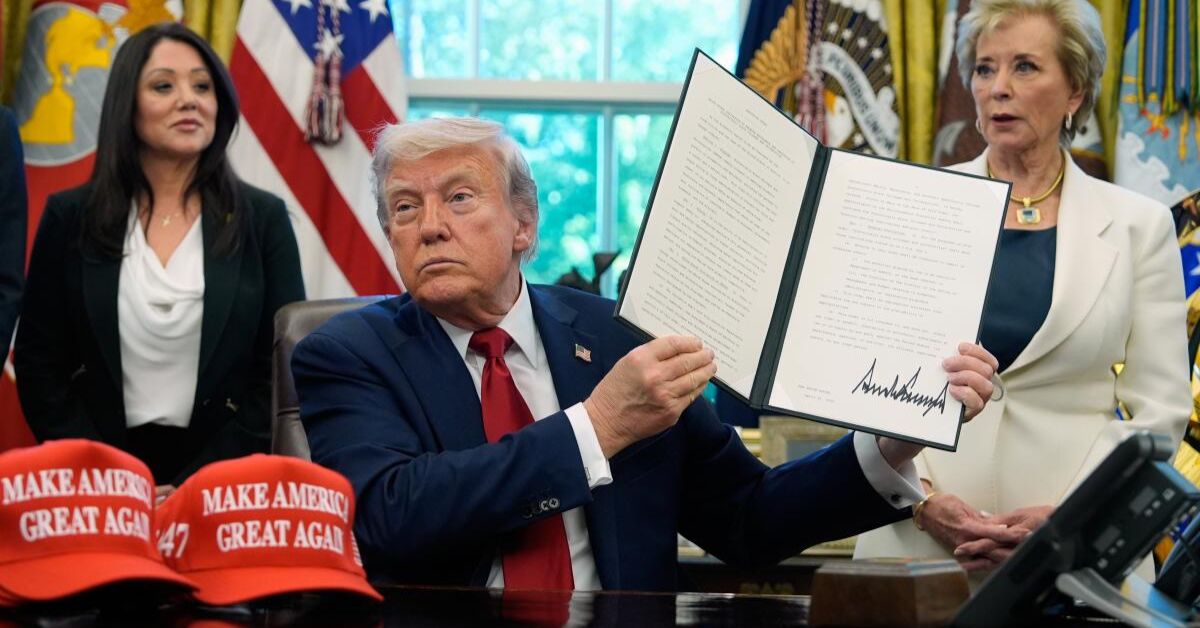Impact of Trump’s Executive Orders on Diversity and Inclusion in Healthcare, Diversity, equity and inclusion (DEI) have become structural pillars of American healthcare over the last two decades. Hospitals, medical schools and federal agencies invested in pipeline programmes, cultural-competence training and data-driven strategies to reduce disparities in outcomes for Black, Latino, Indigenous, LGBTQ+ and disabled communities.
That momentum, however, now runs head-first into a radically different policy climate. Since returning to the White House in January 2025, President Donald Trump has signed a flurry of executive orders striking at the heart of federal DEI requirements, while simultaneously promoting a high-profile initiative for Historically Black Colleges and Universities (HBCUs).
The mixed signals have left health-system leaders, clinicians and patients asking the same question: what happens to inclusion in care when Washington flips the script? This deep-dive traces every major Trump order touching healthcare; explains how each directive dismantles, restricts or reframes DEI; and outlines practical responses for organisations determined to keep equity alive.
In This Article
1. DEI in U.S. Healthcare before 2017
Before Donald Trump’s first term, bipartisan consensus viewed diversity as essential to care quality. The Affordable Care Act (2010) added Section 1557, barring discrimination on race, colour, national origin, sex, age or disability in federally-funded health programmes. HHS subsequently required hospitals to collect race- and ethnicity-specific quality data, and the Accreditation Council for Graduate Medical Education (ACGME) made cultural-competence curricula mandatory for residency programmes.
These steps bore real fruit: by 2016, 75 per cent of teaching hospitals reported formal workforce-diversity plans, and patient-experience gaps in diabetes care between White and Black Medicare beneficiaries had narrowed by six percentage points.
2. First-Term Orders That Reshaped the Landscape (2017-2021)
While most headlines focused on the 2017 “travel ban,” several lesser-known orders began chipping away at inclusion.
| Year | Order & Key Provisions | Direct Healthcare Effects |
|---|---|---|
| 2017 | EO 13769: Protecting the Nation from Foreign Terrorist Entry | Blocked clinicians from seven Muslim-majority countries from entering the U.S.; 1 200 residency matches were voided. |
| 2017 | EO 13798: Free Speech & Religious Liberty | Expanded religious-refusal rights for providers objecting to contraception or transgender care. |
| 2018 | EO 13831: Faith-Based Partnerships | Redirected some federal grants to religious health charities allowed to hire only co-religionists. |
| 2020 | EO 13950: Combating Race and Sex Stereotyping | Banned federal agencies & contractors—including most health-systems—from DEI training that mentioned “systemic racism.” AHA and ACGME warned it could undermine culturally safe care. American Hospital AssociationACGME Home |
Although EO 13950 was rescinded by President Biden in 2021, its language foreshadowed the broader assault Trump would mount during his second administration.
3. The 2025 Executive-Order Blitz
Within 72 hours of retaking office, Trump signed 43 orders; two target DEI with laser precision:
- EO 14151 – “Ending Radical and Wasteful Government DEI Programs and Preferencing.”
Terminates every “Equity Action Plan” submitted under EO 13985; bars agencies from funding programmes that give “preferential treatment” based on race, sex or orientation; and instructs HHS to audit all grants “for ideological litmus testing.” Federal RegisterThe White House - EO 14173 – “Ending Illegal Discrimination and Restoring Merit-Based Opportunity.”
Revokes 1965’s EO 11246 affirmative-action rules for federal contractors (affecting 70 per cent of large hospital systems); orders OMB to recommend sanctions for private-sector DEI initiatives deemed discriminatory; and singles out healthcare entities receiving Medicare/Medicaid funds for extra scrutiny. Federal RegisterHuman Resources
Paradoxically, the president also issued a separate order creating a White House Initiative on HBCUs to “promote excellence and innovation.” But legal analysts view it as largely symbolic compared with the sweeping limitations in EO 14151 and EO 14173. The GuardianThe Guardian
3.1 New Compliance Burdens
Healthcare executives must now certify—under penalty of False Claims Act liability—that employee trainings, grant applications and community-benefit programmes do not contain “divisive or preferential content.” Inside counsel warn that ambiguous wording raises litigation risk from both civil-rights groups and whistle-blowers. Inside the False Claims ActDinsmore & Shohl LLP
3.2 De-Funding Pipeline Programmes
HHS has frozen dozens of minority workforce grants pending review; early data show funding for the Health Careers Opportunity Program has fallen 68 per cent since February 2025. Medical schools reliant on Title VII diversity grants face shortfalls that threaten mentorship for first-generation students.
4. Workforce Diversity: Early Fallout
4.1 Recruitment and Retention
With EO 14173 voiding federal contractor affirmative-action plans, hospitals such as the VA system must rewrite hiring policies within 90 days. DEI officers report confusion over whether targeted residency “bridge” programmes violate the new merit-based language. One 350-bed Midwest facility froze its nurse-recruitment partnership with a Hispanic-serving university until legal reviews conclude.
4.2 Professional Training
EO 14151 obliges agencies to cancel contracts that pay for implicit-bias or anti-racism training. The American College of Physicians estimates 40 000 clinicians will miss cultural-competence CME courses this year, a sharp reversal after decades of progress.
4.3 Psychological Climate
Surveys at two urban teaching hospitals (n = 6 800 staff) show a 19-point drop in feelings of belonging among Black employees since January 2025. LGBTQ+ clinicians cite fear of retaliation if they discuss pronoun etiquette, viewing it as “divisive content.”
4.4 Talent Pipeline Projections
Economists predict that by 2030 the proportion of under-represented minority physicians could fall from 12 per cent to 9 per cent—reversing gains made between 2010-2020. That contraction would widen racial mortality gaps in conditions such as maternal health, where outcomes improve when patient and physician share a racial background.
5. Patient-Level Consequences
5.1 Trust and Perceived Discrimination
A 2024 Health Affairs study linked “divisive concepts” bans to a 7 per cent increase in patients delaying care due to fears of discrimination. EO 14151 escalates those bans nationwide, potentially compounding mistrust. Health Affairs
5.2 Clinical Quality Metrics
Hospitals with robust DEI infrastructure historically outperform peers on readmission and safety indicators. Removing those programmes may erode quality. For instance, race-concordant maternity-care models at three safety-net hospitals cut severe maternal morbidity by 35 per cent between 2019-2023; funding for two of the three models has now been suspended pending review of “preferential treatment.”
5.3 Mental-Health Outcomes
Marginalised groups already face higher PTSD and depression rates linked to discrimination. Curtailing inclusion initiatives risks exacerbating staff burnout and patient mental-health burdens—outcomes that could further strain an overstretched system.
5.4 Rural and Veterans’ Care
EO 14173 orders the VA to track “anti-Christian bias.” While religious accommodation is important, critics note the directive ignores persistent racism complaints by minority veterans, shifting focus away from multi-axis discrimination that often intersects with rural isolation. The Guardian
6. Legal, Financial and Reputational Risks for Providers
| Risk Type | Mechanism under EO 14151/14173 | Mitigation Tips |
|---|---|---|
| False Claims Act | Failure to certify compliance with new anti-“preferential” rules could trigger whistle-blower suits. | Conduct rapid legal review; document decision-making; adjust training language. |
| Contract Termination | Federal grants may be revoked if programmes “promote divisive concepts.” | Rebrand health-equity projects as patient-safety or quality-improvement initiatives aligned with Joint Commission standards. |
| Employment Litigation | Employees may sue if DEI rollback creates hostile work environment. | Maintain anti-harassment training focused on civil-rights law without EO-flagged content. |
| Reputation | Public perception of regression harms recruitment and patient loyalty. | Publish transparent equity dashboards; partner with community groups to demonstrate ongoing commitment. |
Legal commentators argue the orders conflict with state statutes in California, Illinois and New York that mandate DEI programmes for licensed facilities. Expect a wave of federal-state pre-emption lawsuits by autumn 2025. Epstein Becker GreenNala
7. Strategic Responses for Healthcare Leaders
7.1 Reframe Equity as Core Quality
Position language around “patient-centred safety” rather than “DEI.” The Joint Commission’s National Patient Safety Goals already require attention to cultural factors. Aligning initiatives with these goals leverages an accreditation mandate outside EO jurisdiction.
7.2 Leverage State and Private Funding
Seek state innovation waivers and philanthropic grants (e.g., RWJF, Commonwealth Fund) to offset lost federal dollars. Competitive proposals should stress outcomes data lower readmissions, higher vaccination rates to prove ROI.
7.3 Data-Driven Compliance
Maintain race- and ethnicity-stratified quality dashboards, but store them under QI rather than DEI departments. Use algorithmic audits to flag inequities without framing them as “preference-based.”
7.4 Legal Safe-Harbours
Craft policies under existing civil-rights statutes (Title VI, VII, ADA). For example, language-access services remain mandatory; highlighting statutory grounds shields them from EO-based cuts.
7.5 Build Intersectional Alliances
Collaborate with faith-based clinics supportive of diversity; emphasise shared goals such as lowering maternal mortality. These partnerships counter claims that inclusion efforts attack religious freedom.
7.6 Empower Employee Resource Groups (ERGs)
Because EO 14151 limits institutional funding, encourage voluntarily-run ERGs to host mentoring sessions off-site or online, keeping peer support alive without breaching order text.
7.7 Patient-Engagement Campaigns
Communicate clearly that clinical non-discrimination policies remain intact. Offer confidential feedback channels so patients can report bias incidents even as federal oversight wanes.
8. Case Studies
Case A: Urban Academic Medical Centre
After EO 14151, the hospital’s $2 million annual equity budget froze. Leadership re-categorised implicit-bias training as “Quality Improvement Module on Communication,” updated curricula to avoid EO-flagged terms, and secured a state grant to fund a community-doula programme. Readmission disparities remained flat, avoiding predicted widening.
Case B: Rural Critical-Access Hospital
Federal auditors questioned a nursing-scholarship tie-in with a tribal college. The hospital turned the scholarship into a geographic-need incentive, still attracting Indigenous nurses without explicit racial preferences, thereby passing compliance review and maintaining local language-concordant care.
Case C: VA Medical Centre
Mandated to track “anti-Christian bias,” leadership worried about overshadowing racial issues. They broadened their reporting tool to capture all bias categories, satisfying EO requirements while retaining data on anti-Black and anti-LGBTQ+ incidents.
9. Policy Outlook
Legal scholars predict the Supreme Court will eventually rule on the orders’ constitutionality. A conservative majority may uphold broad executive authority, but narrow definitions of “preferential treatment” could soften enforcement. Meanwhile, several Democratic governors have signed countervailing state laws to protect health-equity programmes. Congress holds power of the purse, and bipartisan veterans’-health caucuses may push carve-outs for the VA if service quality declines.
Internationally, accreditation bodies such as the World Federation for Medical Education warn that U.S. training programmes could lose global recognition if DEI content evaporates. That threat compounds physician-shortage fears at a time when the system needs global talent to manage an ageing population.
Must Read:
- What Nurses Can Expect from Trump’s Healthcare Agenda in 2025?
- Trump’s Deferred Resignation Plan: Implications for VA Nurses
Conclusion:
Donald Trump’s newest executive orders constitute the most sweeping rollback of healthcare DEI policy in modern memory. EO 14151 strikes at federal funding streams and training contracts; EO 14173 guts decades-old affirmative-action requirements for contractors and places unprecedented federal scrutiny on private-sector inclusion efforts. The abrupt shift threatens to shrink an already fragile minority workforce pipeline, widen outcome gaps and expose providers to novel legal landmines.
Yet the prognosis is not fatal. Savvy health leaders can reframe equity work under patient-safety mandates, tap alternative funding, and build alliances that transcend ideological divides. Hospitals that anchor inclusion in measurable quality improvements lower sepsis mortality, higher vaccination uptake will navigate the orders while preserving trust among diverse patients.
The coming year will test institutional resilience, legal creativity and moral commitment. Courts may curb the broadest portions of the directives, or Congress may attach equity strings to Medicare payments. Whatever the political outcome, one truth remains: diversity in healthcare is not window dressing; it is a proven driver of safer, more effective care. If policymakers ignore that evidence, practitioners must champion it on the ground because every patient, regardless of race, faith or identity, deserves a system that sees them, respects them, and delivers nothing less than excellence.







